In today’s fast-paced digital world, understanding how consumers think and feel has become more important than ever. That’s where neuromarketing steps in-a powerful concept transforming the way brands connect with audiences. So, what is neuromarketing? Simply put, it’s the science of understanding how the human brain responds to marketing stimuli, helping businesses craft smarter, emotionally driven campaigns. For anyone building a successful digital marketing strategy, this beginner’s guide by Saumik Idnani breaks down neuromarketing into easy-to-understand insights you can apply right away.
As a digital marketing strategist, staying ahead of current digital marketing trends means learning not just what works-but why it works. From improving ad performance to optimizing your online marketing strategy, neuromarketing offers a data-backed way to align your message with your audience’s subconscious desires. In an era where digital marketing strategy and planning are evolving rapidly, integrating neuromarketing can help brands stay competitive and human-centric.
This guide explores how neuromarketing fits into marketing strategy, why it matters in digital marketing industry trends, and how to use it ethically to navigate new trends in digital marketing. Whether you’re a freelancer or agency, this is your roadmap to smarter, more engaging marketing.
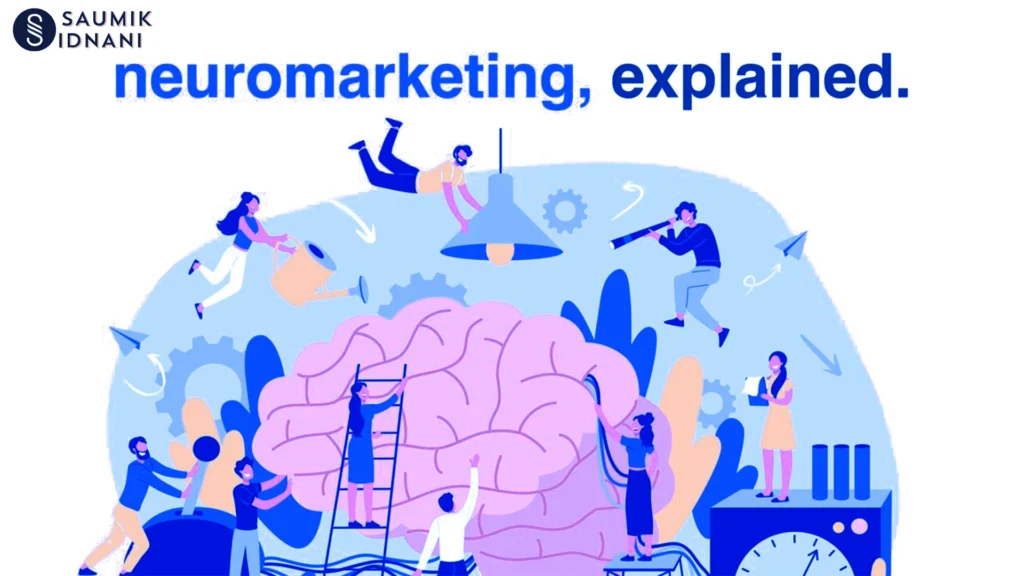
Introduction to Neuromarketing: What Digital Marketers Need to Know
If you’ve ever wondered what is neuromarketing and how it connects to the world of digital marketing, you’re in the right place. Neuromarketing is the intersection of neuroscience and marketing, helping brands understand how customers think, feel, and act before making a purchase decision. In an era where attention spans are short and competition is fierce, neuromarketing gives digital marketers a strategic edge. As digital marketing trends continue to evolve, using insights from the human brain is proving to be one of the smartest ways to refine a digital marketing strategy.
At its core, neuromarketing helps brands decode emotional responses, subconscious triggers, and mental patterns that influence behavior. As a digital marketing strategist, understanding how people respond to ads, websites, or even social media posts is critical. Consumers don’t always know why they prefer one brand over another, but neuromarketing bridges that gap between decision and emotion.
This guide by Saumik Idnani simplifies neuromarketing into actionable insights for those building a powerful online marketing strategy. Instead of relying on assumptions or vanity metrics, marketers can use data-backed neuroscience principles to drive engagement and build authentic connections. Whether you run Facebook ads, design websites, or write email campaigns, neuromarketing helps tailor every touchpoint to how the brain naturally processes information.
As current digital marketing trends move toward personalization, emotion, and ethical engagement, neuromarketing aligns perfectly with those shifts. From color choices to word usage, it all plays a role in shaping user experience. That’s why incorporating neuromarketing into your digital marketing strategy and planning isn’t just smart-it’s necessary.
Understanding what is neuromarketing and its benefits will keep you at the forefront of digital marketing industry trends. As marketers, our job is not just to sell but to understand. The deeper that understanding, the better our ability to influence responsibly. And with new trends in digital marketing constantly emerging, neuromarketing will only grow in importance for strategists and brands alike.
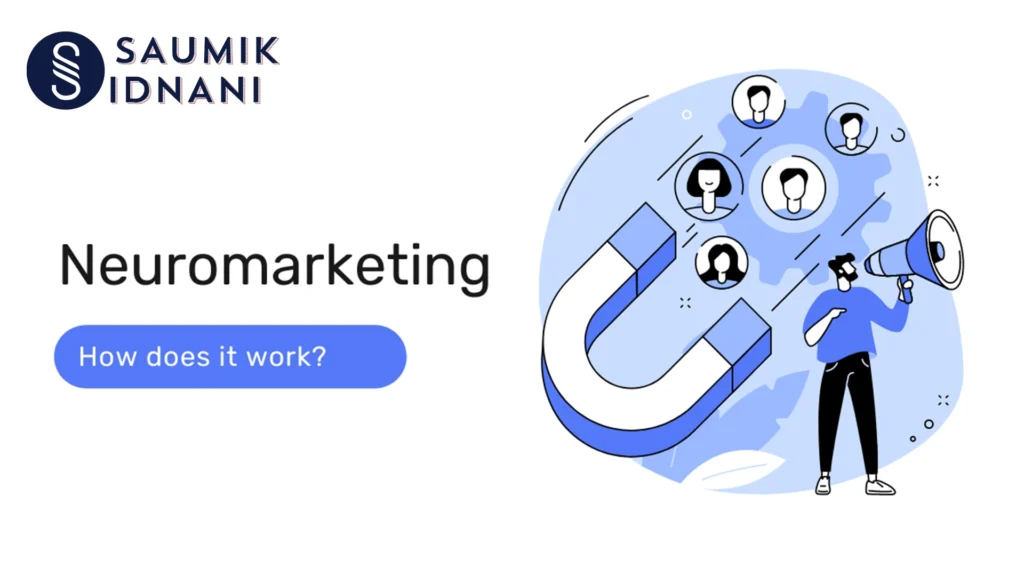
How Neuromarketing Works: Psychology and Consumer Behavior Basics
To fully grasp what is neuromarketing, it’s essential to understand the psychological foundation behind it. At its heart, neuromarketing taps into consumer behavior and how the brain processes decisions. It explores what captures attention, what holds interest, and-most importantly-what drives someone to take action. For a successful digital marketing strategy, knowing these insights gives you the power to influence in ethical and effective ways.
When people interact with marketing-whether it’s an ad, a landing page, or a product description-they aren’t always consciously aware of why they like it. That’s where psychology comes in. Neuromarketing focuses on three key brain processes: emotion, memory, and decision-making. These three pillars influence how your audience navigates your online marketing strategy.
For example, emotions play a critical role in how we connect with content. A heartfelt story, a relatable pain point, or a powerful visual can evoke strong emotional responses. These emotions guide purchasing decisions far more than logic. By applying this to your digital marketing strategy and planning, you’re not just selling a product-you’re selling a feeling, a solution, a transformation.
As a digital marketing strategist, leveraging emotional design and copywriting can drastically improve conversion rates. It’s why brands use words like “exclusive,” “limited time,” or “don’t miss out.” These terms create urgency, activating the brain’s natural fear of missing out (FOMO), which is a powerful decision driver. This approach aligns with current digital marketing trends that prioritize user experience and empathy.
Memory also plays a role. Repeated exposure to brand visuals, slogans, or jingles makes them stick. Neuromarketing helps you create these “sticky” moments. Whether it’s through colors, patterns, or brand voice, you can craft a consistent narrative that becomes unforgettable. This tactic is especially useful in digital marketing industry trends, where brand consistency across platforms boosts trust.
Ultimately, neuromarketing helps you align your marketing strategy with how your audience actually thinks, not how you assume they think. It takes the guesswork out of digital engagement and brings a science-backed approach to your campaigns. As new trends in digital marketing emerge, understanding these consumer behavior basics will keep you ahead of the curve.
Why Neuromarketing Matters in Digital Marketing Strategy
When building a successful digital marketing strategy, it’s no longer enough to focus only on SEO, social media, or automation. To truly resonate with audiences in today’s digital landscape, marketers must dig deeper into the psychology of decision-making. That’s where neuromarketing becomes a game-changer. But what is neuromarketing doing differently? It makes marketing more human, more emotional, and ultimately, more effective.
Incorporating neuromarketing into your marketing strategy allows you to connect on a subconscious level. Instead of only targeting demographics, you’re addressing behavior, emotion, and mental triggers-things traditional metrics can’t always capture. In a world flooded with content, the brands that connect emotionally win. As current digital marketing trends lean toward personalized, empathetic, and experience-driven marketing, neuromarketing is emerging as a crucial tool.
Let’s take a look at digital marketing industry trends. Consumers today are savvier and more selective. They ignore hard sells and tune out generic content. Neuromarketing helps break through this noise by aligning content with what truly matters to the brain-simplicity, emotion, and relevance. Whether it’s tweaking a headline, redesigning a call-to-action button, or selecting the right image, small neuromarketing tweaks can drastically improve campaign results.
For digital marketing strategists like Saumik Idnani, using neuromarketing isn’t about manipulation-it’s about alignment. It’s about designing campaigns that feel natural to the human brain. People are bombarded with information, so making their experience intuitive and emotionally engaging helps improve outcomes across every funnel stage-from awareness to conversion.
Additionally, neuromarketing supports better digital marketing strategy and planning. It adds depth to A/B testing by highlighting why one version performs better than another. It supports content creation by focusing on language that stimulates emotion or memory. And it enhances UX design by focusing on layout, color, and movement that appeal to instinctive user behavior.
With new trends in digital marketing favoring ethical, value-based strategies, neuromarketing becomes a powerful tool to stand out-while building trust. Knowing what is neuromarketing and applying it intelligently transforms your online marketing strategy from guesswork to precision. That’s the kind of advantage no digital marketer can afford to ignore in today’s competitive space.
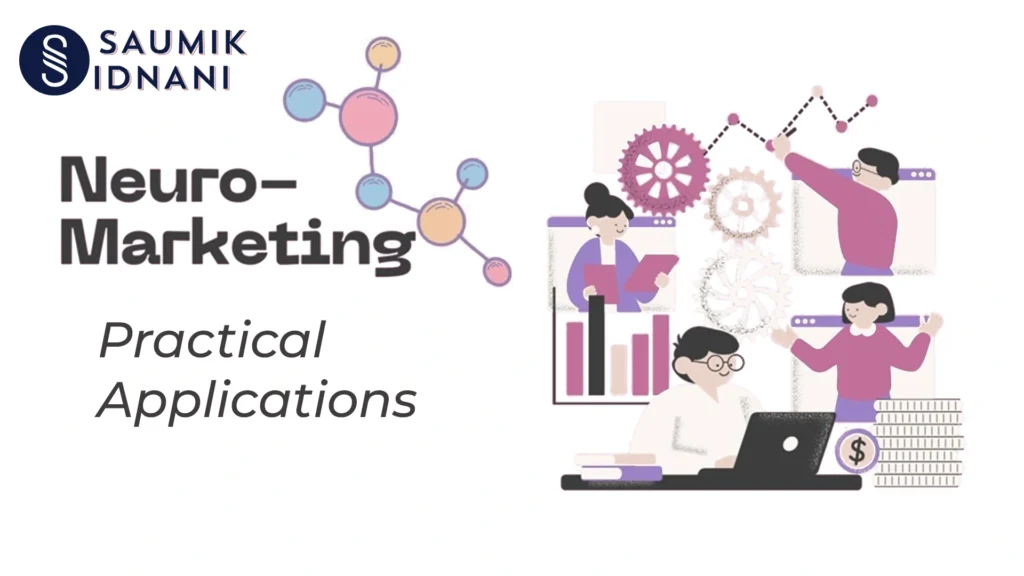
Practical Applications of Neuromarketing in Digital Campaigns
Now that we understand what is neuromarketing, the next step is learning how to apply it in real-world digital campaigns. For many marketers, the gap between theory and execution can be confusing. But neuromarketing is not just for large corporations with big budgets-freelancers, startups, and agencies can easily integrate it into their digital marketing strategy to enhance impact.
One of the most powerful applications of neuromarketing is emotional targeting. Emotions like fear, joy, surprise, and nostalgia can significantly influence consumer actions. For example, including emotionally charged headlines in your Facebook ads or storytelling in email campaigns can increase engagement and conversions. These tactics align with current digital marketing trends, where personalized and emotionally intelligent content performs better than generic promotions.
Color psychology is another effective tool. Certain colors evoke specific responses-red for urgency, blue for trust, and green for peace. A digital marketing strategist like Saumik Idnani can use this insight to design more persuasive landing pages, banners, or product pages. Incorporating this into your online marketing strategy helps drive action without relying on heavy-handed sales tactics.
Another practical example is layout design. The way content is structured on a website or in an ad affects how users navigate and react. By guiding the eye through a visual hierarchy-using bold fonts, contrast, and whitespace-you can lead users to your call-to-action more effectively. These subtle changes are at the core of how neuromarketing improves marketing strategy performance.
CTA (Call-To-Action) buttons can also benefit from neuromarketing. Words like “Get Started,” “Discover,” or “Join Now” work better than generic “Submit” or “Click Here.” That’s because they connect to an emotional desire-curiosity, excitement, or exclusivity. These strategies reflect digital marketing industry trends that prioritize user-centric design and conversion-driven tactics.
Moreover, neuromarketing supports strong digital marketing strategy and planning by reducing trial-and-error. It adds a scientific layer to your decisions, allowing campaigns to be both creative and data-backed. In a world shaped by new trends in digital marketing, this balance is vital for success.
Understanding what is neuromarketing is just the beginning. Applying it through simple, actionable steps will transform how you communicate, persuade, and convert-no neuroscience degree required.
Neuromarketing and Social Media: Driving Engagement Through Emotion
Social media is where attention is short, competition is high, and emotions run the show. This is why neuromarketing and social media are such a powerful combination. To understand what is neuromarketing in the context of platforms like Instagram, LinkedIn, and Facebook, it’s important to know how the human brain reacts to visual and emotional stimuli. For today’s digital marketing strategist, emotional storytelling is no longer optional-it’s essential.
Content that taps into joy, surprise, fear, or belonging gets shared, liked, and remembered. This emotional resonance is the reason memes go viral, stories get engagement, and reels hook viewers in under 3 seconds. Integrating neuromarketing principles into your digital marketing strategy for social media can significantly increase user interaction and retention.
For instance, using facial expressions in visuals helps build emotional connection quickly. Humans are naturally wired to focus on faces-especially ones that show emotion. A smiling face in a carousel post or an emotional reaction in a reel triggers empathy and boosts recall. These small adjustments play a huge role in shaping an effective online marketing strategy.
Color also matters on social media. Different hues evoke different feelings, which is why many leading brands maintain strict color palettes. A platform like Instagram thrives on aesthetics, and understanding how the brain interprets colors can help shape brand perception. These tactics are consistent with current digital marketing trends focused on sensory engagement and emotional intelligence.
Copywriting plays a key role, too. Crafting captions that ask questions, evoke curiosity, or create urgency leads to stronger engagement. Language that triggers emotion is more likely to be remembered-and acted upon. For digital marketing strategy and planning, writing with empathy and intent ensures content that converts without coming off as salesy.
Even post timing can be influenced by neuromarketing. Posting when your audience is most alert and emotionally responsive increases the chance of engagement. These considerations reflect digital marketing industry trends that emphasize optimization based on behavior, not just demographics.
For Saumik Idnani and other modern marketers, combining neuromarketing with social media strategy means creating content that doesn’t just look good-but feels right. As new trends in digital marketing shift toward authenticity and emotional relevance, neuromarketing will continue to be a key tool in driving connection and conversion.
Check out how social media helps businesses to grow exponentially in 2025: Social Media: The Pillar Supporting Business Growth in 2025
Tools and Techniques: How to Start Using Neuromarketing in Your Work
You now know what is neuromarketing and how it influences marketing strategy-but how do you actually begin using it in your own work? The good news is you don’t need access to a lab or a neuroscience degree to get started. There are simple, practical tools and techniques any digital marketing strategist can use to integrate neuromarketing into their digital marketing strategy.
First, use A/B testing as your experimental playground. By testing different versions of a headline, image, CTA, or even layout, you can understand which triggers the best emotional response. This method aligns perfectly with digital marketing strategy and planning, giving you real data on what resonates with your audience.
Next, consider using heatmaps and scroll tracking tools like Hotjar or Crazy Egg. These tools show you where users are clicking, hovering, or dropping off. When paired with neuromarketing principles, you can redesign landing pages and funnels based on natural brain patterns, not just guesswork. This reflects a strong grasp of current digital marketing trends that rely on data-driven decisions.
Emotional language testing is another powerful tool. Platforms like CoSchedule’s Headline Analyzer or Copy.ai help craft copy that evokes strong emotional responses. This helps improve the storytelling aspect of your online marketing strategy, making your message more compelling and memorable.
Color testing is simple yet effective. Use A/B tests to see how different color combinations perform. Do red buttons convert better than blue ones? Does a calming background image improve time on site? These questions form the core of neuromarketing techniques that improve user experience.
Neuromarketing also helps guide video content. As attention spans shrink, using the right intro hook, emotional appeal, and storytelling structure helps maintain viewer retention. Short-form video, especially in Reels and YouTube Shorts, benefits greatly from this approach. Saumik Idnani often applies these techniques in campaigns to increase watch time and engagement.
Lastly, eye-tracking insights, while more advanced, are becoming accessible through affordable tools and plug-ins. They offer data on how users visually process pages-a powerful way to optimize UX, headlines, and imagery.
These tools don’t replace creativity-they enhance it. As digital marketing industry trends become more psychology-driven, combining data with emotional intelligence is the future. With new trends in digital marketing pushing for personalized, ethical, and effective experiences, neuromarketing is the toolkit every strategist should explore.
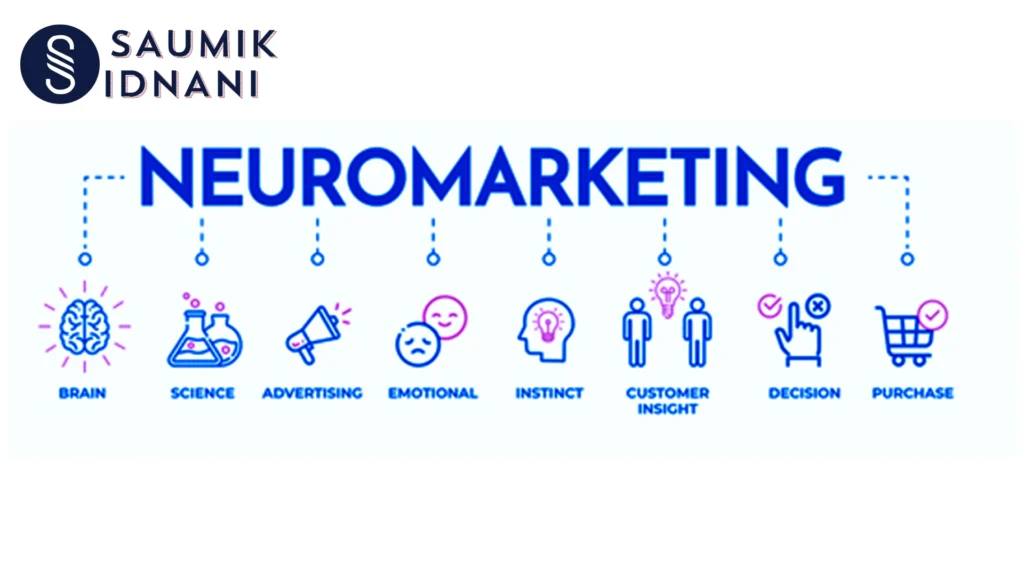
Future of Neuromarketing: Trends Every Digital Marketer Should Watch
As we look ahead, it’s clear that what is neuromarketing today is only the beginning. The future promises even deeper integration between brain science and marketing technology. For any digital marketing strategist, staying on top of new trends in digital marketing means keeping a close eye on how neuromarketing evolves.
Artificial intelligence (AI) is already shaping the future of neuromarketing. Tools that analyze facial recognition, voice tone, and biometric feedback are emerging to better understand how consumers emotionally respond to ads and content. These tools will allow digital marketing strategy and planning to become more predictive and emotionally tuned.
Voice marketing and conversational AI also reflect how neuromarketing will adapt. As smart assistants like Alexa and Google Assistant become more popular, understanding how people emotionally respond to voice tone and language will shape online marketing strategy. Empathetic and emotionally intelligent voice interactions will become part of digital marketing industry trends moving forward.
Personalization will go even deeper. Based on biometric data or real-time behavioral analysis, marketers will soon be able to serve ads and content that align with a person’s mood or cognitive state. While this opens exciting possibilities, it also raises ethical concerns. Saumik Idnani believes that transparency and consent will be crucial in applying neuromarketing responsibly.
As consumers become more privacy-conscious, neuromarketing will need to strike a balance between personalization and ethics. This aligns with current digital marketing trends focused on trust and authenticity. Building human-first campaigns that respect user data while still using neuromarketing insights will define future success.
Emotionally intelligent automation is another key development. Future platforms may adapt messaging in real time based on a user’s engagement signals. This hyper-responsiveness will lead to better customer experiences and improved conversion rates, strengthening your overall digital marketing strategy.
To stay ahead, marketers must continuously learn, experiment, and adapt. Neuromarketing isn’t a passing trend-it’s a foundational shift in how we understand and engage audiences. As technology advances and consumer expectations evolve, knowing what is neuromarketing and applying it ethically will define your competitive edge in the ever-changing landscape of digital marketing trends.
Conclusion
As we wrap up this beginner’s guide, it’s clear that understanding what is neuromarketing is more than just keeping up with a buzzword-it’s about embracing a smarter, science-backed approach to your digital marketing strategy. In an age where audience attention is fleeting and competition is fierce, neuromarketing offers a deeper, more emotionally intelligent way to connect with your target audience. Whether you’re just starting out as a digital marketing strategist or running full-scale campaigns, integrating neuromarketing into your marketing strategy gives you a distinct edge in today’s evolving landscape.
The growing popularity of neuromarketing reflects a broader shift in digital marketing trends. It’s not enough to guess what your customers want-you need to understand how they think, feel, and behave. That’s why this guide explored not only what is neuromarketing, but also how it ties directly into current digital marketing trends, from consumer psychology and emotion-driven content to smart use of color, visuals, and CTAs.
For businesses, creators, and agencies alike, implementing neuromarketing isn’t a major leap-it’s about making small, strategic changes to your online marketing strategy. From crafting better headlines to choosing the right images and creating emotionally engaging campaigns, these methods are both accessible and effective. Professionals like Saumik Idnani are already using these insights to build stronger brands and optimize every stage of the customer journey.
Looking ahead, the fusion of neuroscience with marketing tech will continue to redefine the digital marketing industry trends. As AI becomes more sophisticated and data collection becomes more ethical, neuromarketing will evolve alongside new trends in digital marketing, emphasizing personalization, transparency, and emotional relevance.
If you’re serious about your digital marketing strategy and planning, this is the time to adopt a neuromarketing mindset. It’s not just about making sales-it’s about creating human-centered experiences that resonate, build trust, and deliver long-term value.
To stay ahead of the curve, keep testing, learning, and applying these insights. With neuromarketing in your toolbox, your brand can not only adapt to change but lead the charge in the next wave of digital marketing trends.
For more personalized insights or campaign strategy sessions, connect with Saumik Idnani-your trusted partner in building emotion-driven, data-backed marketing that truly works.
What is neuromarketing and how does it apply to digital marketing strategy?
Neuromarketing is the science of understanding how consumers think and feel when exposed to marketing content. By studying brain activity, eye movements, and emotional responses, marketers can design campaigns that influence behavior on a subconscious level. In digital marketing strategy, neuromarketing helps refine ad creatives, landing pages, and messaging to drive better engagement and conversions. Saumik Idnani, a digital marketing strategist, emphasizes the importance of using neuromarketing principles to align with current digital marketing trends and improve ROI. This approach ensures that every marketing strategy feels personal, emotionally engaging, and optimized for real-world results.
Why should digital marketers learn about neuromarketing now?
As digital marketing industry trends continue to shift toward personalization and data-driven strategies, neuromarketing offers marketers a psychological edge. It allows them to craft emotionally resonant content that drives action. With increasing competition, understanding what is neuromarketing can help marketers stay ahead of the curve. Saumik Idnani recommends neuromarketing as an essential component of modern digital marketing strategy and planning, helping brands better connect with their audiences. It’s particularly valuable in today’s fast-paced environment where attention spans are short and emotional engagement is key to online success.
How does neuromarketing influence consumer behavior online?
Neuromarketing taps into consumer psychology by analyzing how the brain responds to visuals, colors, words, and layouts. It’s used to determine which emotions drive purchasing decisions in an online environment. As part of a digital marketing strategy, this data helps create optimized content and landing pages that convert better. Saumik Idnani integrates neuromarketing insights to build high-performing campaigns tailored to emotional triggers. With the rise of current digital marketing trends, understanding subconscious motivators is more crucial than ever. Neuromarketing can significantly impact user experience, reduce bounce rates, and increase ROI.
Can neuromarketing improve my online marketing strategy for social media?
Absolutely. Neuromarketing is especially powerful on social media where emotions drive user behavior. By using visuals, colors, and storytelling that resonate on a deeper level, brands can drive higher engagement. Incorporating neuromarketing techniques like emotional hooks, facial expressions, and color psychology helps increase shares, likes, and conversions. Saumik Idnani applies these strategies across Instagram, Facebook, and LinkedIn to align with new trends in digital marketing. By leveraging brain-based design, your online marketing strategy becomes more memorable and impactful-making your brand stand out in a crowded feed.
What are the best tools to get started with neuromarketing?
You don’t need expensive brain scanners to begin. Tools like heatmaps (e.g., Hotjar, Crazy Egg), A/B testing platforms, eye-tracking software, and user behavior analytics like Google Analytics can give insights into customer attention and behavior. These tools are useful for optimizing website UX, CTAs, and visual hierarchy. Saumik Idnani advises marketers to start small by analyzing emotional responses in content performance metrics. These tools, when aligned with a digital marketing strategy and planning framework, allow marketers to tap into subconscious drivers and continuously improve their campaigns.
Is neuromarketing ethical in digital campaigns?
Neuromarketing is ethical when used responsibly to enhance user experience and meet customer needs. It’s about understanding consumers, not manipulating them. Brands use these insights to create more relevant and meaningful messages. According to Saumik Idnani, ethical neuromarketing means respecting privacy, avoiding fear-based tactics, and always adding value. With transparency and consent as part of your marketing strategy, neuromarketing aligns with EEAT standards and improves brand trust. The goal is not control-but connection-built on emotional intelligence and authentic engagement, especially in line with current digital marketing trends.
What industries benefit the most from neuromarketing?
Almost every industry can benefit from neuromarketing-retail, tech, health, fashion, finance, and e-commerce in particular. These sectors rely heavily on emotional decision-making. Neuromarketing helps create visuals, copy, and experiences that influence how consumers feel and act. For digital-first industries, understanding what is neuromarketing adds precision to campaigns. Saumik Idnani applies neuromarketing in sectors like eCommerce, education, and wellness, helping brands elevate their digital marketing strategy using emotional intelligence and psychological insights. When applied correctly, it enhances user experience and improves conversion rates across platforms.
How is neuromarketing different from traditional marketing research?
Traditional marketing research focuses on conscious feedback through surveys and focus groups, whereas neuromarketing uncovers subconscious reactions like emotional arousal or decision hesitation. It uses tools like facial coding, eye tracking, and behavior mapping to reveal how consumers really respond. This provides deeper insights into why people choose certain products or brands. Saumik Idnani believes neuromarketing bridges the gap between data and emotion, helping marketers align with digital marketing trends more effectively. Unlike guesswork, neuromarketing ensures your marketing strategy is backed by how the brain actually works.
What are some real-world examples of neuromarketing in action?
Major brands like Coca-Cola, Amazon, and Netflix use neuromarketing to shape packaging, UX, ad creatives, and even movie thumbnails. These companies leverage emotional triggers to influence decision-making and user retention. For small businesses and freelancers, similar principles apply through color selection, persuasive copy, and intuitive UX design. Saumik Idnani uses neuromarketing in digital ad design, landing page optimization, and video scripting-showing that even startups can benefit from emotional targeting. These tactics align with new trends in digital marketing where personalization and emotional resonance drive performance.
How can I integrate neuromarketing into my digital marketing strategy today?
Start by analyzing your content and visuals through a neuromarketing lens-are they emotionally engaging? Are you using the right colors, words, and CTAs? Conduct A/B tests with emotion-driven variations and track performance. Understand your audience’s emotional journey, not just the logical funnel. Saumik Idnani recommends starting with heatmaps, facial recognition tools, and sentiment analysis to inform design and messaging. Over time, integrate these insights into your broader digital marketing strategy and planning. As you stay aligned with current digital marketing trends, your content becomes more impactful and human-centered.


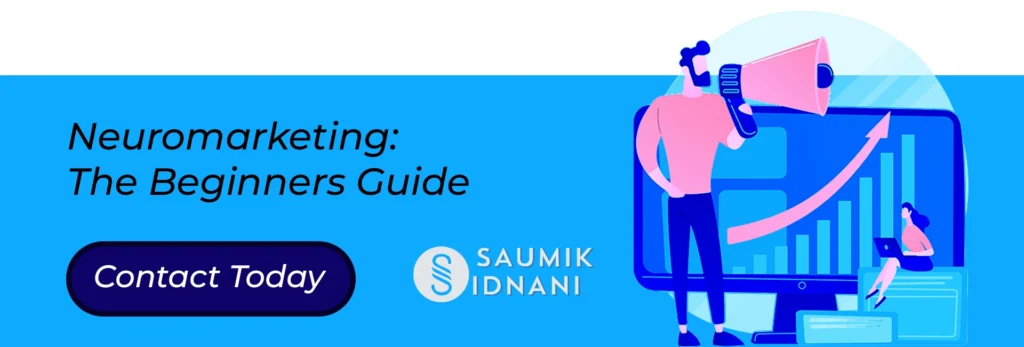
Pingback: How Social Media evolved into a business growth engine in 2025.